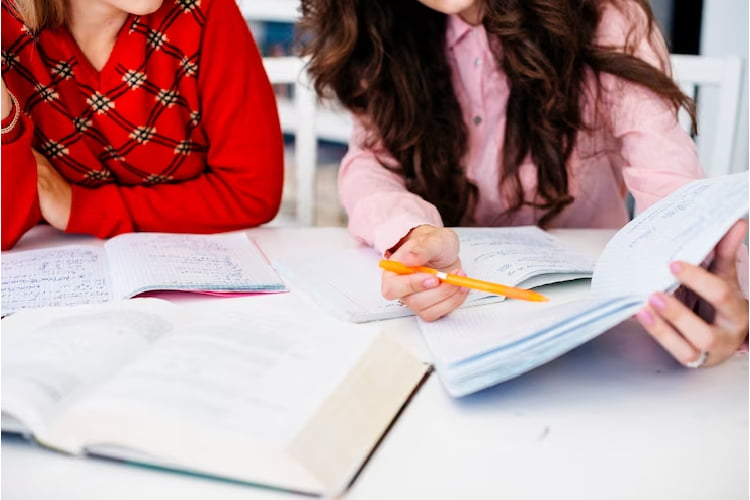Designing engaging library lesson plans is an important part of being a successful librarian. Learning how to create interesting and meaningful activities for library users which align with learning outcomes helps to ensure that library lessons are both engaging and educational. There are a variety of strategies for designing engaging library lesson plans, such as incorporating various learning styles, differentiating instruction, creating an inviting library space, and utilizing technology. This introduction will discuss the importance of library lesson plans and some of the most effective strategies for designing engaging library lesson plans.
Analyzing Student Needs and Goals in Library Lesson Plans
The first step in designing an engaging library lesson plans is to assess the learning needs and goals of your class. By taking the time to consider curriculum standards, student backgrounds, interests, and prior experience, you can assess where they are collectively in terms of understanding library concepts and explore how to adjust instruction to meet their specific needs. It is important to remember that all types of learners have different needs and goals. For instance, kinesthetic learners benefit from hands-on activities and direct experiences, while visual learners need visual representations of ideas, such as graphic organizers or diagrams. By incorporating a variety of learning styles and methods into your lesson plans, you are better able to cater to the individual needs of each student.

Leveraging Technology to Enhance Learning Outcomes
By incorporating digital technologies into your library lesson plans, you can ensure that students are able to benefit from a range of interactive learning approaches. Consider building in opportunities for students to interact with digital databases, online catalogs, video streaming sites, and even virtual libraries. In addition, there is a wide range of interactive web-based tools that can be used to explore both traditional and emerging library topics. Knowing how to leverage technology can not only help enhance learning outcomes but also help simplify the process of developing library lessons to fit the needs of diverse student populations.
Crafting Intentional Questions to Guide Inquiry
An essential component of any library lesson plan is the crafting of meaningful questions to guide student inquiry. Intentional questions can help point students in the right direction when exploring a given topic. Questions can focus on the “who”, “what”, “where”, “when”, “why”, and “how” of an issue or topic. Crafting thought-provoking questions for students can be an effective way to not only frame a lesson but also to promote more critical thinking and higher-level student engagement.
Determining Appropriate Material and Resources for the Library Lesson Plans
Once the learning goals of the library lesson have been analyzed, it is important to determine which materials and resources will best support students in achieving those goals. Consider a range of library resources including, but not limited to, traditional print materials, digital reference sources, online databases, eBooks, audio recordings, videos, and more. Also, exploring multimedia such as blogs, videos, and podcasts can be a great way to bring a range of voices and viewpoints to a topic. Moreover, leveraging public library collections, library consortia, or interlibrary l strategies to keep students up-to-date on the most current library information.
Integrating Multiple Activities to Maximize Engagement
In order to maximize student engagement, it is important to develop lessons that include a range of activities and strategies. For instance, instead of just having students read text from a textbook, consider having them make connections between text and real-world applications. Additionally, activities such as scavenger hunts, research projects, and peer teaching can provide students with engaging ways to explore the world of libraries. Finally, integrating a variety of activities into a lesson can help to ensure that all types of learners are able to participate in the lesson.
Embedding Assessments and Evaluation Criteria to Promote Learning
In addition to incorporating activities into your library lesson plans, it is important to also embed assessments and evaluation criteria into them as well. This will allow students to receive direct feedback on their performance and better understand their progress toward meeting learning goals. Assessments can take various forms such as quizzes, written assignments, oral presentations, and more. It is also important to provide clear and concise criteria that students can refer to when evaluating their progress. Providing assessments and evaluation criteria can help ensure that students are meeting learning objectives and are better able to build on what they have learned in future lessons.
Developing Creative Strategies to Connect Lessons to Real-World Applications
It is important to develop creative strategies to make this connection so that students are better able to relate to the material. For instance, instead of just reading about a particular book, you could organize an author visit that would allow students the opportunity to hear from an actual author about their work. Incorporating examples from current events, field trips, and guest speakers can also help to bring the material and information to life in the classroom.
Incorporating Reading Aloud and Collaborative Reading Techniques
Another way to enhance engagement and meaning-making in the library is to incorporate reading aloud and collaborative reading techniques. Additionally, collaborative reading activities can help build and strengthen skills in comprehending increasingly complex texts. By engaging in these strategies, students can better access and understand information from a variety of sources and become active participants in their own learning.
Encouraging Self-Paced Exploration and Discovery
In addition to carrying out more structured activities, it is important to also offer students opportunities to explore and discover library topics on their own. This can be a great way to develop student interest in library topics and help facilitate inquiry-based learning. Consider providing tools such as online databases, digital media tools, and interactive reference sources that allow them to engage with the material on their own. By allowing students to work at their own pace, they are better able to explore and become engaged in learning.
Crafting Supports and Accommodations to Meet Individual Learner Needs
Finally, when developing your library lesson plans, it is important to include support and accommodations for students with special needs. Developing strategies to meet these needs can look like pre-teaching and scaffolding, allowing for extra time and/or support, providing visual and/or audio breaking down of difficult material, and using assistive technology as needed. Additionally, consider offering multiple ways for students to demonstrate mastery of concepts such as alternative assessment strategies, making use of digital media tools, and creating flexible grouping options. By realizing that every student learns differently, you can ensure that all students have access to an engaging library lesson regardless of their learning abilities.
Conclusion
Designing engaging library lesson plans requires thoughtful and creative approaches. It is critical to consider students’ interests, differentiate instruction, and ensure that the content is aligned with standards and objectives. Additionally, engaging activities such as scavenger hunts, problem-solving challenges, and interactive games should be included to capture students’ interest and enthusiasm. Finally, regular opportunities for collaboration and feedback should be incorporated to ensure that library lessons are effective and engaging.

Jesus Jenkins is an Arizona based audio engineer and musician who specializes in creating rich, atmospheric soundscapes. With a passion for both music and sound, Jesus uses his expertise to craft unique soundscapes for his production and performance work. His experience has seen Jesus in a variety of roles, from touring with top recording artists, to writing music for documentaries and commercials.


